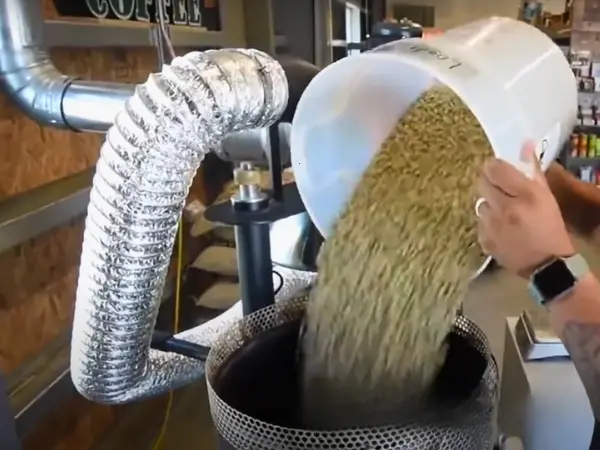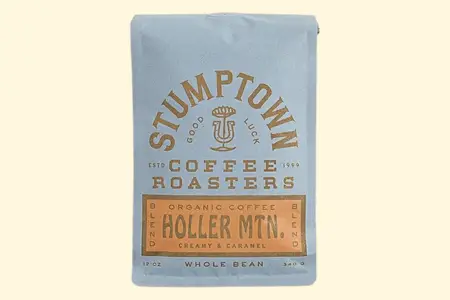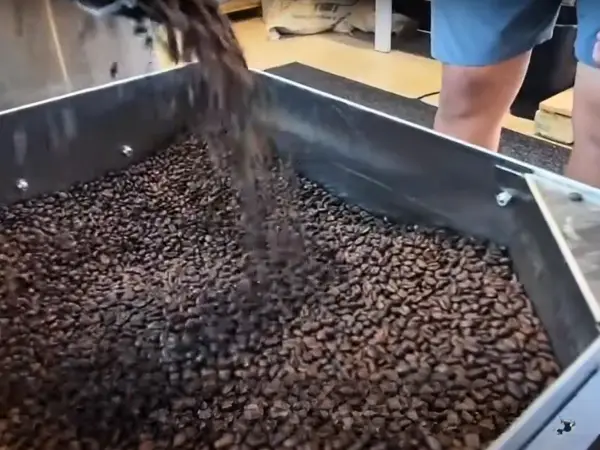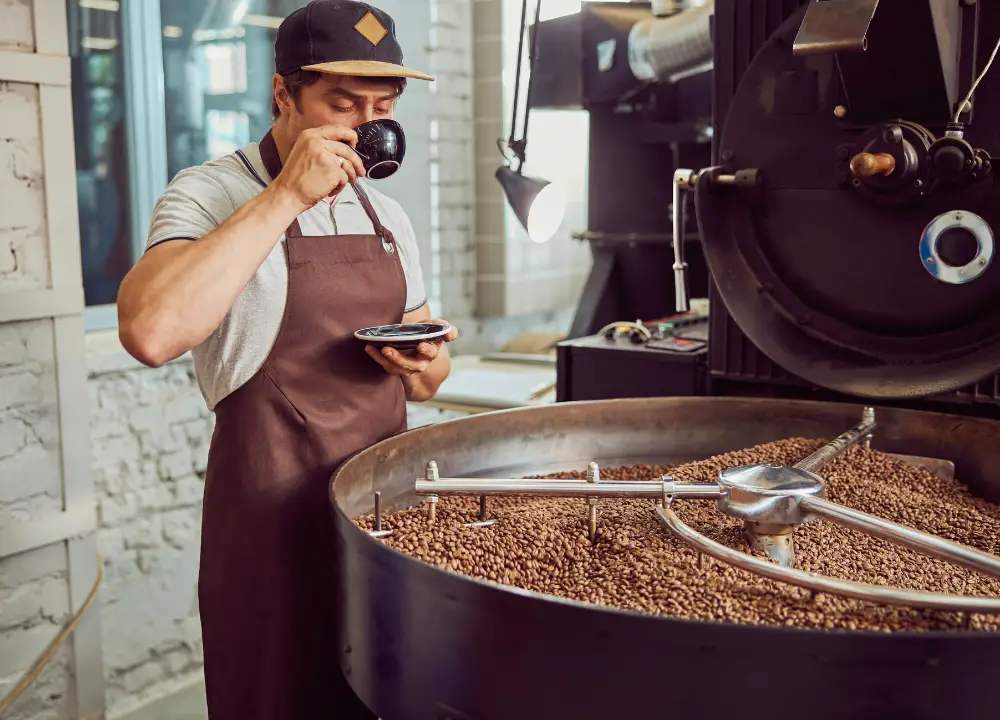Air-roasting coffee involves heating beans on a bed of hot air. This method ensures even roasting and enhances flavor.
Air-roasting coffee is a meticulous process that produces a superior cup of coffee. Unlike traditional drum roasting, air-roasting uses hot air to suspend and roast the coffee beans. This technique minimizes the risk of scorching and delivers a more uniform roast.
What Is Air Roasted Coffee
Air-roasted coffee involves roasting coffee beans using a stream of hot air. This method offers several benefits over traditional drum roasting. The beans float on a bed of hot air, ensuring a more uniform roast.
How Does Air Roasting Work?
In air roasting, beans are placed in a roasting chamber. Hot air circulates around them, causing the beans to roast evenly. This process helps in removing the chaff, which is the dry skin that comes off the beans during roasting.
The Science Behind Air-roasting Coffee
The science behind air-roasting coffee involves understanding how air flow and temperature work together to enhance the roasting process.
How Does Air Flow Affect Coffee Roasting?
Air flow plays a crucial role in the coffee roasting process. Proper air flow ensures even roasting by circulating hot air around the coffee beans. This helps in achieving a consistent roast.
- Even Heat Distribution: Air flow distributes heat evenly, preventing hot spots and ensuring all beans are roasted uniformly.
- Chaff Removal: The movement of air helps in removing chaff, the outer skin that comes off the beans during roasting.
- Cooling Process: Adequate air flow aids in quickly cooling the beans once the desired roast level is achieved.
The Role Of Temperature In Air-roasting
Temperature control is critical in air-roasting. Precise temperature regulation allows for the development of complex flavors and aromas in the coffee beans.
- Initial Phase: Beans are heated slowly to remove moisture and prepare for the roasting process.
- Maillard Reaction: At medium temperatures, amino acids and sugars react to create the coffee’s flavor and color.
- Caramelization: Higher temperatures lead to caramelization, enhancing sweetness and creating a rich, full-bodied flavor.
Air-roasting machines use digital controls to maintain the perfect temperature throughout the roasting process. This precision helps in achieving the desired roast profile, whether it’s light, medium, or dark.
| Phase | Temperature Range | Effect |
|---|---|---|
| Initial Heating | 100-150°C | Moisture removal |
| Maillard Reaction | 150-200°C | Flavor development |
| Caramelization | 200-250°C | Sweetness and body |

Popular Air-roasted Coffee Brands To Try
For coffee enthusiasts, trying air-roasted coffee from popular brands can be a delightful experience. Here are some of the top air-roasted coffee brands to explore.
Blue Bottle Coffee
Blue Bottle Coffee is a pioneer in the specialty coffee industry. They are known for their meticulous approach to air-roasting, ensuring every batch is perfect. Here are some highlights:
- Consistency: Their air-roasting process ensures uniformity in every batch.
- Flavor Profile: Expect bright and clean flavors, with a smooth finish.
- Sustainability: Blue Bottle emphasizes sustainable sourcing and ethical practices.
- USDA Organic.
Blue Bottle Coffee’s commitment to quality and sustainability makes them a favorite among coffee lovers.

Stumptown Coffee Roasters
Stumptown Coffee Roasters is renowned for their innovative roasting techniques. Their air-roasting method brings out the best in each bean. Key features include:
- Flavor Profile: Holler Mountain offers an invigorating burst of citrus and berry jam, beautifully complemented by notes of creamy caramel. Crafted from 100% Arabica beans, this coffee promises a delightful experience in every cup.
- Ethical Sourcing: Stumptown’s Direct Trade program emphasizes quality and sustainability. They prioritize fair prices for producers, fostering long-term relationships to ensure the best quality beans while promoting ethical practices in sourcing.
- Brewing Versatility: The way you brew can significantly affect the flavor profile, whether you’re using espresso, cold brew, or pour-over methods. Experimenting with your grinder and even the water quality can elevate your coffee experience. Tailor each cup to your personal taste preferences!

Onyx Coffee Lab
Indulge in the full-bodied flavor of Monarch Onyx Espresso Whole Bean Coffee. This smooth and sweet blend is designed to be your go-to comfort coffee, featuring perfectly balanced notes of dark chocolate, molasses, red wine, and dried berries.
Onyx Coffee Lab stands out in the air-roasted coffee scene, renowned for its innovative techniques and exceptional quality. Key features include:
Innovation: Onyx Coffee Lab is dedicated to pushing the boundaries of coffee roasting, continually experimenting with new methods to enhance flavor and quality.
Transparency: They emphasize openness by providing comprehensive details about their sourcing and roasting processes, fostering trust with their customers.
Flavor Excellence: Their coffees are celebrated for their vibrant, distinct flavors, setting them apart as a favorite among coffee enthusiasts.

Benefits Of Air-roasted Coffee
From improved flavor profiles to health benefits, air-roasted coffee stands out in the world of coffee aficionados.
1. Enhanced Flavor Profiles
Air-roasting allows for even heat distribution. This results in a more uniform roast. Uneven roasting often leads to burnt or undercooked beans. With air-roasting, each bean gets the same treatment. This ensures a balanced flavor profile. Coffee lovers often describe air-roasted coffee as smoother and cleaner. This method highlights the unique characteristics of the bean’s origin.
2. Reduced Acidity
The air-roasting process reduces the acidity in coffee. This makes it gentler on the stomach. Many people suffer from acid reflux or other digestive issues. Drinking air-roasted coffee can help mitigate these problems. It offers a more enjoyable drinking experience without the harshness.
3. Healthier Coffee
During air-roasting, beans are suspended in hot air. This minimizes the presence of carcinogens that can form during traditional roasting. The result is a healthier cup of coffee. Plus, air-roasting retains more of the bean’s natural antioxidants. These compounds are beneficial for overall health.
4. Fresher Taste
Air-roasting often results in a fresher taste. The process is typically done in smaller batches. This means the coffee you purchase is likely roasted more recently. Freshly roasted coffee retains more of its natural flavors. This leads to a more vibrant and enjoyable cup.
5. Eco-friendly Process
Air-roasting is a more eco-friendly roasting method. Traditional drum roasting can produce a lot of smoke and waste. Air-roasting, on the other hand, generates less smoke and is more energy-efficient. This makes it a better choice for the environment. Coffee enthusiasts can enjoy their favorite brew while being mindful of their ecological footprint.

How Air-roasting Coffee Differs From Traditional Methods
Traditional roasting and air-roasting coffee are two distinct methods. Each method impacts the flavor, aroma, and overall coffee experience.
1. Traditional Drum Roasting
Traditional drum roasting uses a rotating drum. Coffee beans tumble inside the drum as it heats up. The heat source is often from below. This method can create uneven heating. Beans on the outside roast faster than those in the center.
Pros:
- Large batch sizes
- Rich, bold flavors
Cons:
- Inconsistent roasts
- Longer cooling times
2. The Mechanics Of Air-roasting
Air-roasting uses hot air to roast coffee beans. The beans float on a bed of hot air. This method ensures even heating. It also prevents scorching or burning.
Pros:
- Consistent roasts
- Cleaner flavor profiles
Cons:
- Smaller batch sizes
- Requires more precise control
3. Flavor And Aroma Differences
Air-roasting often produces a brighter and cleaner taste. Traditional methods can result in richer, deeper flavors. This is due to the even heating in air-roasting. Traditional methods might introduce more smoky notes.
| Method | Flavor Profile | Aroma |
|---|---|---|
| Air-Roasting | Bright, clean | Fresh, vibrant |
| Traditional Drum | Rich, bold | Smoky, deep |
4. Environmental Impact
Air-roasting is more energy-efficient. It uses less energy to heat the air compared to heating a drum. This method also produces fewer emissions. Traditional roasting can contribute to higher energy consumption and more smoke.
Environmental Benefits of Air-Roasting:
- Lower energy usage
- Less smoke and emissions
5. Control And Precision
Air-roasting offers better control. You can adjust the temperature precisely. This method allows for fine-tuning of the roast profile. Traditional roasting requires more experience to achieve consistent results.
Advantages of Control:
- Consistent quality
- Ability to experiment with flavors
Choosing The Right Beans For Air-roasting
Here, we will guide you on how to choose the best beans for air-roasting.
Understanding Bean Varieties
There are two main types of coffee beans: Arabica and Robusta. Arabica beans are known for their smooth, complex flavors. Robusta beans have a stronger, more bitter taste. For air-roasting, Arabica beans are often preferred due to their delicate flavors.
Evaluating Bean Freshness
Freshness is key to a great cup of coffee. Look for beans that have been roasted within the last two weeks. Fresh beans retain more of their natural oils and flavors. Check the roast date on the packaging to ensure you are getting the freshest beans possible.
Considering Bean Origin
The origin of the beans affects their flavor profile. Beans from Ethiopia often have fruity and floral notes. Colombian beans are known for their balanced, nutty flavors. Explore different origins to find your favorite flavor profile.
Inspecting Bean Quality
High-quality beans are free from defects. Look for beans that are uniform in size and color. Avoid beans with cracks, chips, or discoloration. These defects can negatively impact the flavor of your coffee.
Choosing The Right Roast Level
Roast level impacts the flavor and aroma of the coffee. Light roasts are bright and acidic. Medium roasts have a balanced flavor. Dark roasts offer a bold, rich taste. Choose a roast level that suits your taste preferences.
The Air Roasting Process: Step-by-step
The journey from bean to brew is fascinating. One method that stands out is air-roasting. It’s a precise, innovative way to roast coffee beans. Let’s delve into the air-roasting process step-by-step.
The Roasting Chamber
The heart of air-roasting is the roasting chamber. Here, hot air circulates around the coffee beans. This ensures even roasting. The beans stay in constant motion. This prevents scorching and burning.
Temperature Control
Temperature control is crucial. Air-roasting uses precise temperature settings. The beans roast at a consistent temperature. This brings out the best flavors. Temperature adjustments happen in real-time. This allows for perfect roasting.
First Crack
The first crack is an exciting stage. Coffee beans make a popping sound. This means they are expanding and releasing gases. The first crack usually happens around 385°F. It’s a sign that the beans are nearing the light roast stage.
Second Crack
The second crack is another key moment. Beans crack again, but this time more quietly. This stage happens around 435°F. Reaching the second crack means the beans are at a medium to dark roast. The flavors deepen and become more complex.

